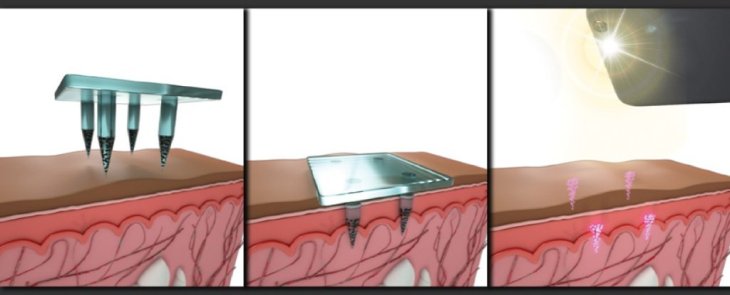This Quantum Ink Could Be Injected Under The Skin To Mark People Who Have Been Vaccinated
Aadhya Khatri - Dec 24, 2019

The research has the investment of the Bill and Melinda Gates Foundation. Bill Gates himself directly asked for the development of this special ink
- Scientists Research Black Holes In A Bid To Build Quantum Teleporter
- Unhackable Quantum Internet Will No Longer Be An Impossible Dream
- This AI Tool Looks At Quantum System And Lets Out Predictions
For nations that have a high rate of vaccination, knowing who have been vaccinated and who have not is a quite challenging task.
To solve that problem, researchers at MIT have created a special kind of ink that can be injected under the skin and is only visible when scanned by a smartphone app.
This low-risk marking system can simplify the whole process of documenting, especially for large-scale vaccination.

According to Kevin McHugh, a researcher of the team, this way of keeping a record can be handy in areas where vaccination cards are unavailable. The system allows for anonymous and quick detection of those who have been vaccinated and those who have not.
The research has the investment of the Bill and Melinda Gates Foundation. Bill Gates himself directly asked for the development of this special ink. He is currently working on eliminating measles and polio by vaccinating.
The special tattoo that comes with the vaccines consists of tiny quantum dots, light-reflecting semiconducting crystals. Under infrared light, these dots will glow. The patterns and the vaccine are injected via dissolvable microneedles made from sugar and polymers.

For now, the marking system is still a testing concept. A test conducted on rats proved that the ink is still visible after nine months from the injecting time.
On skin models of humans, the pattern lasted over five years under simulated exposure to sunlight.
This invention might be the first step in creating a new way for data storing, vaccine applications, and biosensing, which in turn the quality of medical care, especially in less-developed countries.
Featured Stories

Features - Jul 01, 2025
What Are The Fastest Passenger Vehicles Ever Created?

Features - Jun 25, 2025
Japan Hydrogen Breakthrough: Scientists Crack the Clean Energy Code with...

ICT News - Jun 25, 2025
AI Intimidation Tactics: CEOs Turn Flawed Technology Into Employee Fear Machine

Review - Jun 25, 2025
Windows 11 Problems: Is Microsoft's "Best" OS Actually Getting Worse?

Features - Jun 22, 2025
Telegram Founder Pavel Durov Plans to Split $14 Billion Fortune Among 106 Children

ICT News - Jun 22, 2025
Neuralink Telepathy Chip Enables Quadriplegic Rob Greiner to Control Games with...

Features - Jun 21, 2025
This Over $100 Bottle Has Nothing But Fresh Air Inside

Features - Jun 18, 2025
Best Mobile VPN Apps for Gaming 2025: Complete Guide

Features - Jun 18, 2025
A Math Formula Tells Us How Long Everything Will Live

Features - Jun 16, 2025
Comments
Sort by Newest | Popular